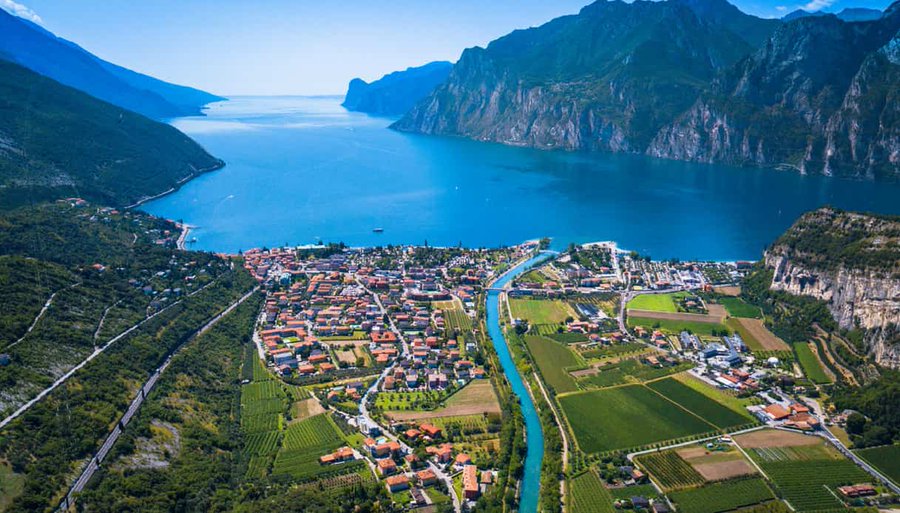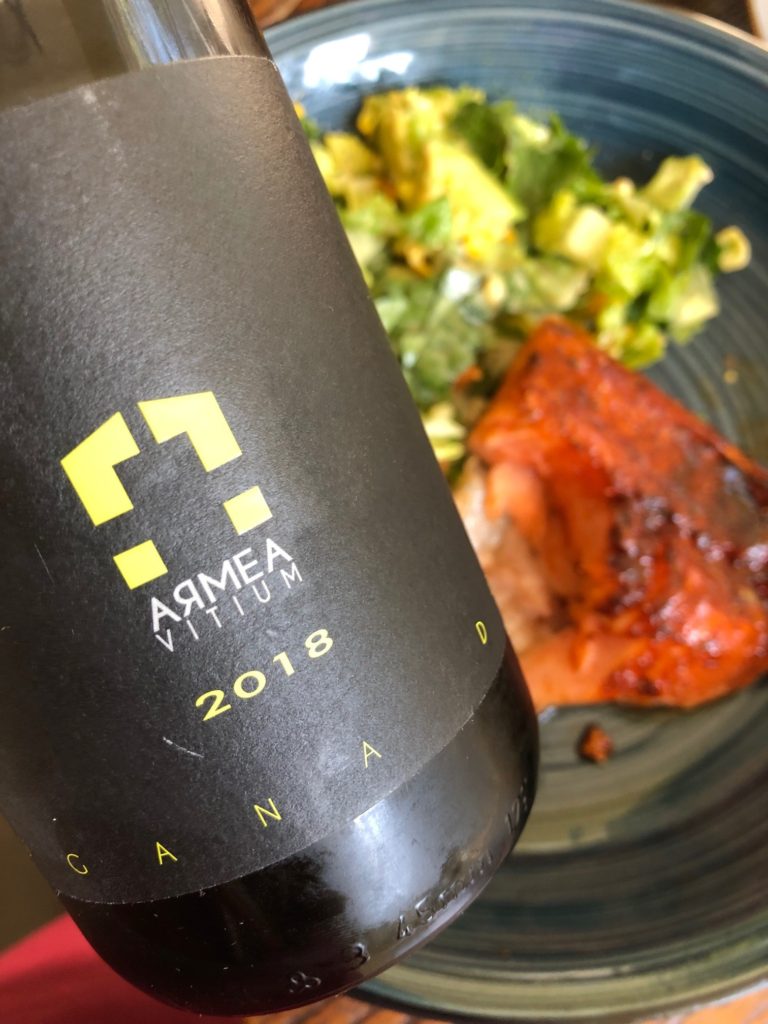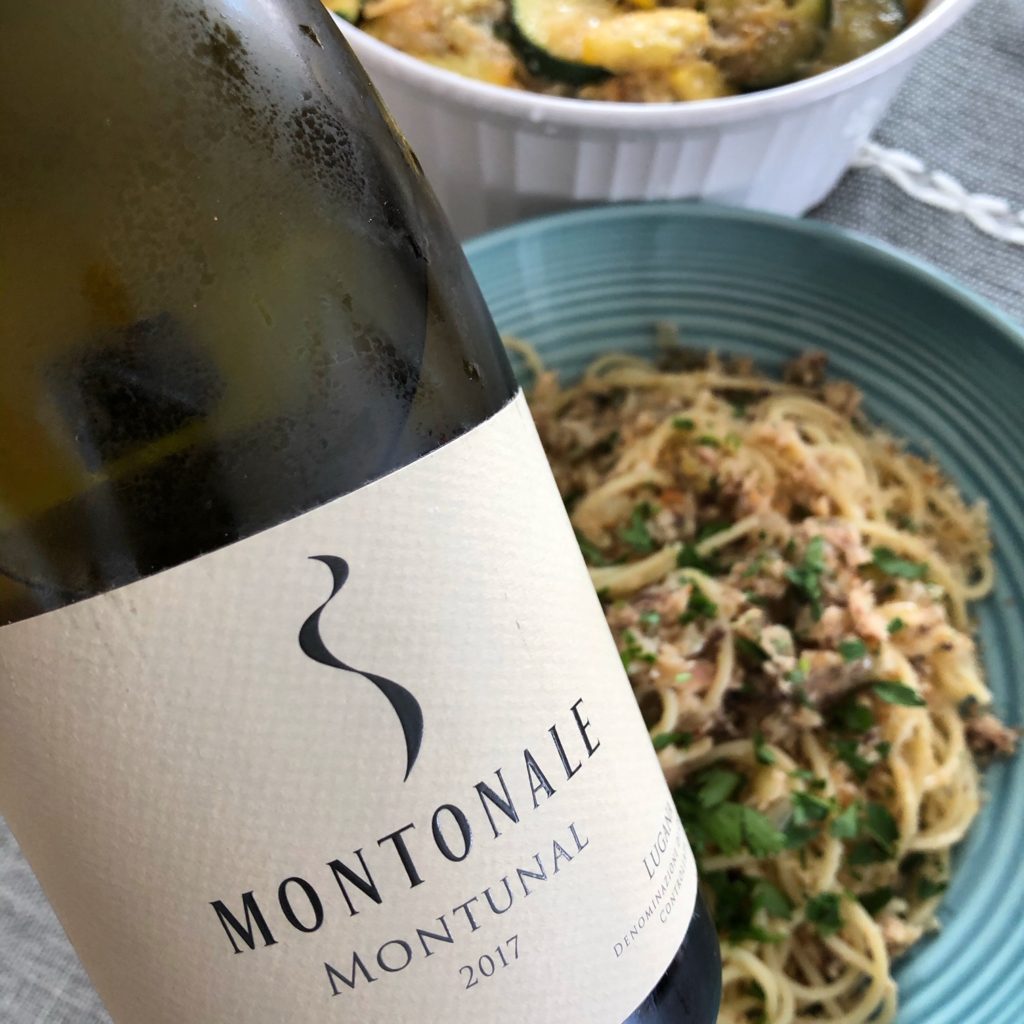Last month I participated in the #Winestudio Lugana program. While the theme was primarily focused on “One Grape, Five Wine Styles”, we were also introduced to the “Lugana Lifestyle”. More on that later.
I’m love trying new-to-me grape varieties and wine regions. That’s what inspired me to try a wine called “Lugana” I saw on a wine list in a little wine bar in Bolzano, Italy in 2016. I’ve been huge fan of Lugana ever since. I wrote a piece entitled “Lugana:Italy’s (Mostly) Hidden Gem not long after I returned from Italy. Nevertheless, I was thrilled to take a deeper dive into Lugana via the 4-week #WineStudio program.

About Lugana
In 1967 Lugana was the first wine made in Lombardy and among the very first in Italy to earn a D.O.C., which recognizes the historical and inseverable tie between the Turbiana grape and its specific region of origin. Lugana is located at the southern end of Lake Garda. Geographically, the region is “two-faced” according to journalist Zeffiro Bocci; in the sense that it straddles the regional border between Lombardy in the west and Veneto in the east. Likewise, it also part of both the Brescia and Verona provinces. There are approximately 120 members of the Consorzio of Lugana winemakers producing wines, still and sparkling, dry to sweet. About 99% of the region’s wineries are small farms & family-owned.

Turbiana; One Grape, Five Styles
It is a relatively small (DOC that specializes in white wine. The sole grape variety is Trebbiano di Lugana, known locally as Turbiana. The origins of the grape itself are unclear. According to one source based on DNA testing of the grape by the University of Milan, “The results of the studies show that, while a close relative of the Verdicchio grape, Turbiana is different from that cultivar in its aromatic characteristics, as well as from a phenological, agronomical and oenological point of view, and is a unique and separate grape variety,” But, the grape has also been linked to the Trebbiano family – in particular Trebbiano di Soave from the nearby Veneto region.
Based on its medium-full bodied character, combined with its mouth watering acidity; I’m inclined to believe it’s a close relative of Verdicchio, one of Italy’s noble white grape varieties. Regardless of whether it’s part of the Verdicchio family, or the Trebbiano family, the grape has adapted to Lugana’s singular combination of climate and soils, thereby evolving into the unique variety known as Turbiana.
There are five types of Lugana wines:
- ’Basic’ Lugana – fresh, fruity, dry, intended for early consumption
- Superiore – classification established in 1998, requires 1 year maturation (not necessarily in oak); with lower yields
- Reserve – aged for min. 24 months, 6 months in bottle; oak maturation is not compulsory
- Vendemmia Tardiva (late harvest) – contains approx. 12 g/l residual sugar (very limited production)
- Spumante (sparkling) – very limited production of both Charmat (Martinotti), which produces a crisp, citrus infused profile and Metodo Classico, which produces a refined, complex perlage.
It’s important to note the above styles of Lugana do not represent a hierarchy of quality. The difference between wine classifications is largely stylistic; fresher versus richer flavored and more complex but most producers save their best grapes for the higher classifications. More than 95% of all Lugana DOC wines are dry, still, white wines! All styles require a minimum of 90% Turbiana, and most are 100%.
Terroir
What makes the region’s terroir unique are the combination of its climate and soils.
According to the Corsorzio Tutela Lugana, the region’s climate is “positively influenced by the temperate breezes of Lake Garda, is mild and fairly constant, with few temperature fluctuations between day and night. A “climate cradle” perfect for highlighting the features of” the Turbiana grape variety.
Its soils are predominantly very dense clay and limestone, rich in mineral salts. The Turbiana grapes grown in Lugana’s soils are naturally high in acidity, with a distinctive tanginess and notes of citrus and almond.
In my glass and on my plate
The 2018 Perla del Garda Lugana pours a pale golden yellow color with green reflections with green apple, pineapple, almond, mandarin orange zest and wet stone aromas. On the palate it approaches full-bodied, with lively acidity and a lush texture with green apple, pineapple, mandarin orange, lemon zest and green almond flavors a hints of salinity and wet stone minerality. 100% Turbiana| 12.5% abv. Per Cellartracker average price – $15! It was wonderful paired with Butter-Poached Shrimp with Fresh Tomatoes and Garlic!
The 2015 Selva Capuzza Lugana Riserva Menasasso
(the highest classification for still dry Lugana wines) pours a very pale straw with green reflections with green apple, flint, lime zest, savory spice green, and honeysuckle aromas. On the palate it’s medium bodied with mouthwatering acidity, and a very appealing supple texture. It’s persistent and focused with green apple, lime, and white pepper flavors with hints of fresh apricot and slightly under ripe green melon flavors with a long finish. 13.5% abv. Average price per Cellartracker – $17. It was a very congenital partner with take-out Thai that included Fresh Spring Rolls with Shrimp, Pad Thai with Tofu and Red Curry.

The 2018 Armea Vitium pours a pale straw color with inviting pineapple, stone fruit, almond and lemon blossom aromas with a hint chamomile. On the palate it’s medium-bodied with mouth-watering, zesty acidity and pineapple, nectarine and ripe peach flavors accented with a bit of wet stone minerality and a clean satisfying finish. 100% Turbiana. 13% abv. It was awesome paired with Maple-Chipotle Cedar Plank Grilled Salmon!

The 2017 Montonale Lugana Montunal. It’s a single vineyard (Montunal) wine from a vineyard planted on clay, and chalk that are rich in minerals. It pours pale straw yellow with green reflection. It shows inviting aromas of green apple, tropical fruit, blanched almond, white flowers with subtle citrus notes. The medium-bodied, very energetic palate shows green apple, pineapple, ripe peach, Meyer lemon flavors accented with a very appealing saline minerality and a kiss of an appetizing bitterness/tartness. 13% abv. Cellartracker says the average price is ~$20. It paired beautifully with Pasta with Sardines, Bread Crumbs and Capers, along with Sauteed Squash topped with Parmesan.
My Takeaways
- Lugana is a gem of region whose ethereal white wines manifest a singular sense of place, that its combination of history (grape vines have grown in the region since the Bronze Age), terroir and an indigenous grape variety known as Turbiana.
- Despite the region being predominantly focused on one grape, its five styles of wine offer wonderful diversity.
- Lugana wines are among the most food friendly wines I’ve enjoyed. They pair well with across diverse cuisines thanks acidity, minerality and savory characteristics of the Turbiana grape.
- Typically priced between $15-$25, Lugana wines offer fantastic quality for the price!
- Lugana’s proximity to Lake Garda, the largest lake in Italy make it a natural destination for watersport lovers (sailing, surfing and diving). But wait! There’s more, the region also offers opportunities for golfing, mountain biking, hiking, museum, an amusement park, ruins of a Roman Villa, and quaint hilltop villages. Plus, the region’s proximity to both Veneto and Lombardy offers opportunities for red wine lovers too! I’m ready for a visit. Whose with me?!
About #Winestudio
#Winestudio is a wine education program produced by Tina Morey. Its message is interactive wine education, thus a better understanding of our world through wine and our part in that world. Questions and comments are encouraged! You can become involved in the #winestudio conversation through Twitter, Facebook and Instagram and meet new wine folks from all over the world!
________________________________________________________________________
Follow me on Twitter, Facebook, Instagram, and Vivino and for all things wine. As a wino with latent foodie tendencies, you’ll also find food and wine pairings, and food related stuff! Become a fan and join ENOFYLZ Wine Blog on Facebook. Cheers!
Copyright Notice: This entire site is Copyrighted 2010-2020. All Rights Reserved. No unauthorized copying of any section of this site is permitted. If you wish to use any part of this site, contact me. For information on Copyright Law, see the official U.S. Copyright Office home page.
A wonderful overview of a (mostly;) undiscovered wine. You have definitely inspired us to try Lugana wine and also to get back to Italy!
Thanks Allison. Lugana is definitely on my short list of Italian destinations. When we visited in 2016, I didn’t know anything about the wines or the region.
I spent 2 hours in Lugana a few years ago. Enough to pique my “wow, I’m liking this grape” curiosity. Got home, got busy. Got a great article here!
I just discovered this wine when a friend asked me to bring something “gazpacho-friendly”. I have never had much luck pairing white with tomato-heavy food but my local wine shop saved the day with Lugana! And for less than $20 to boot. Everyone loved it!